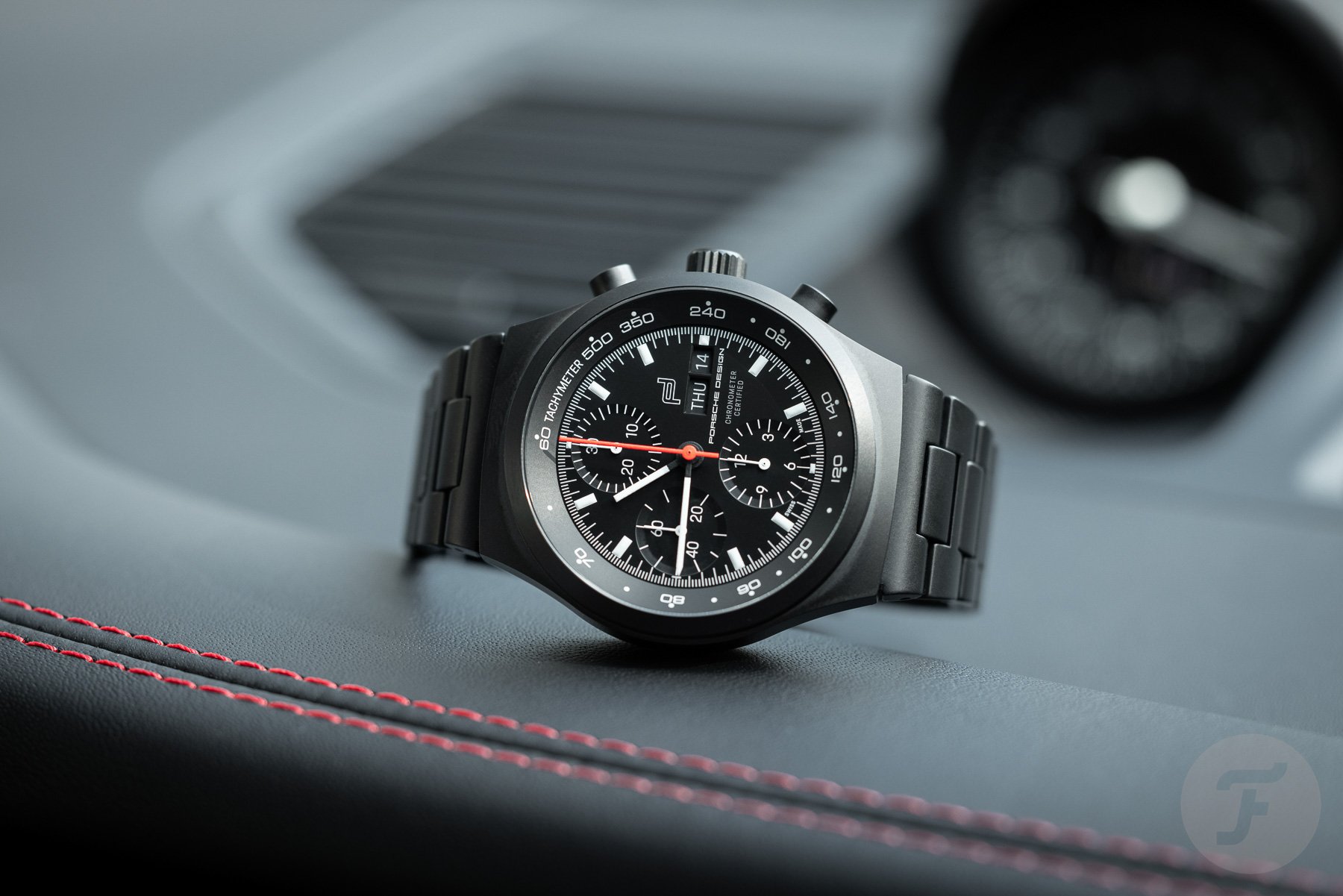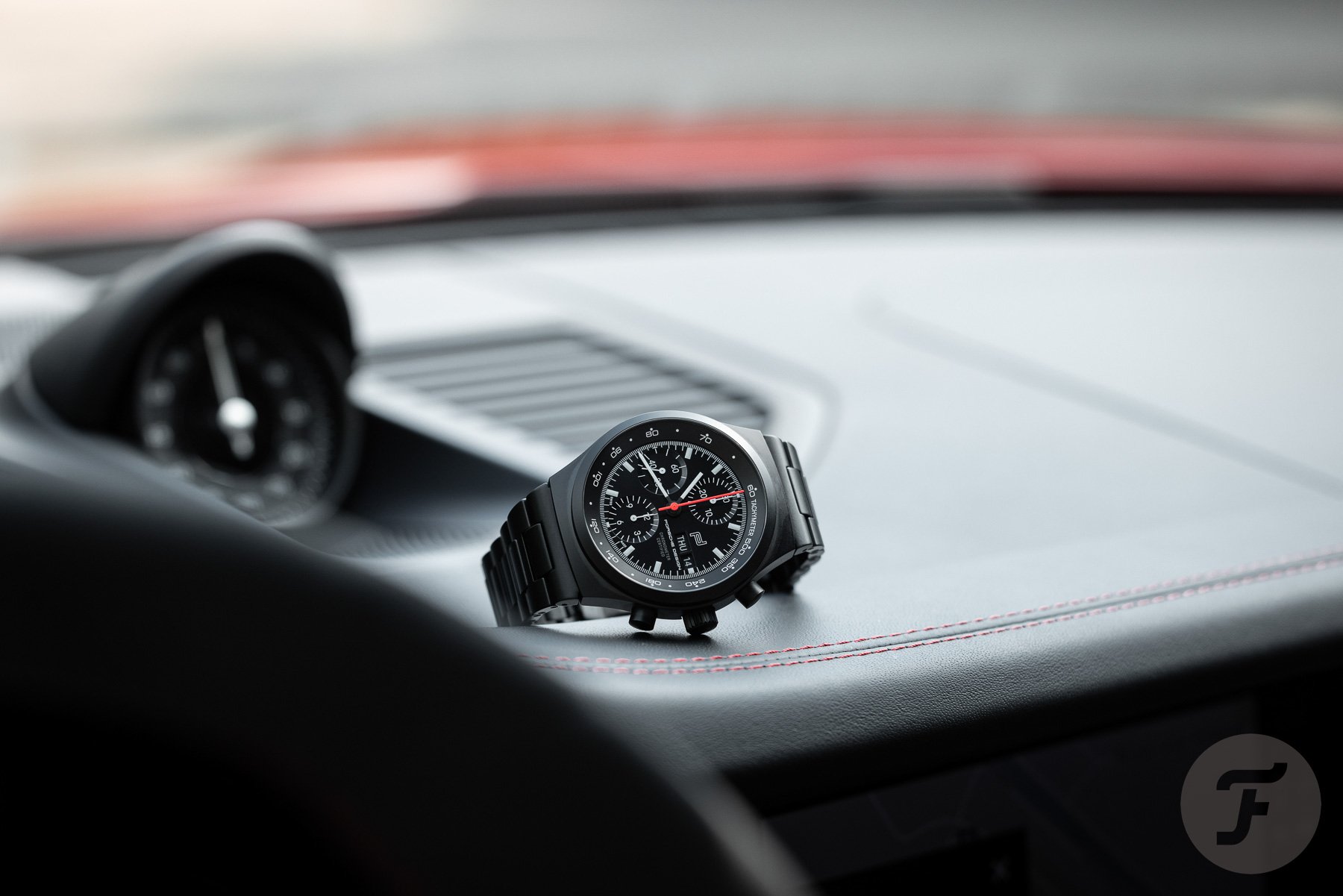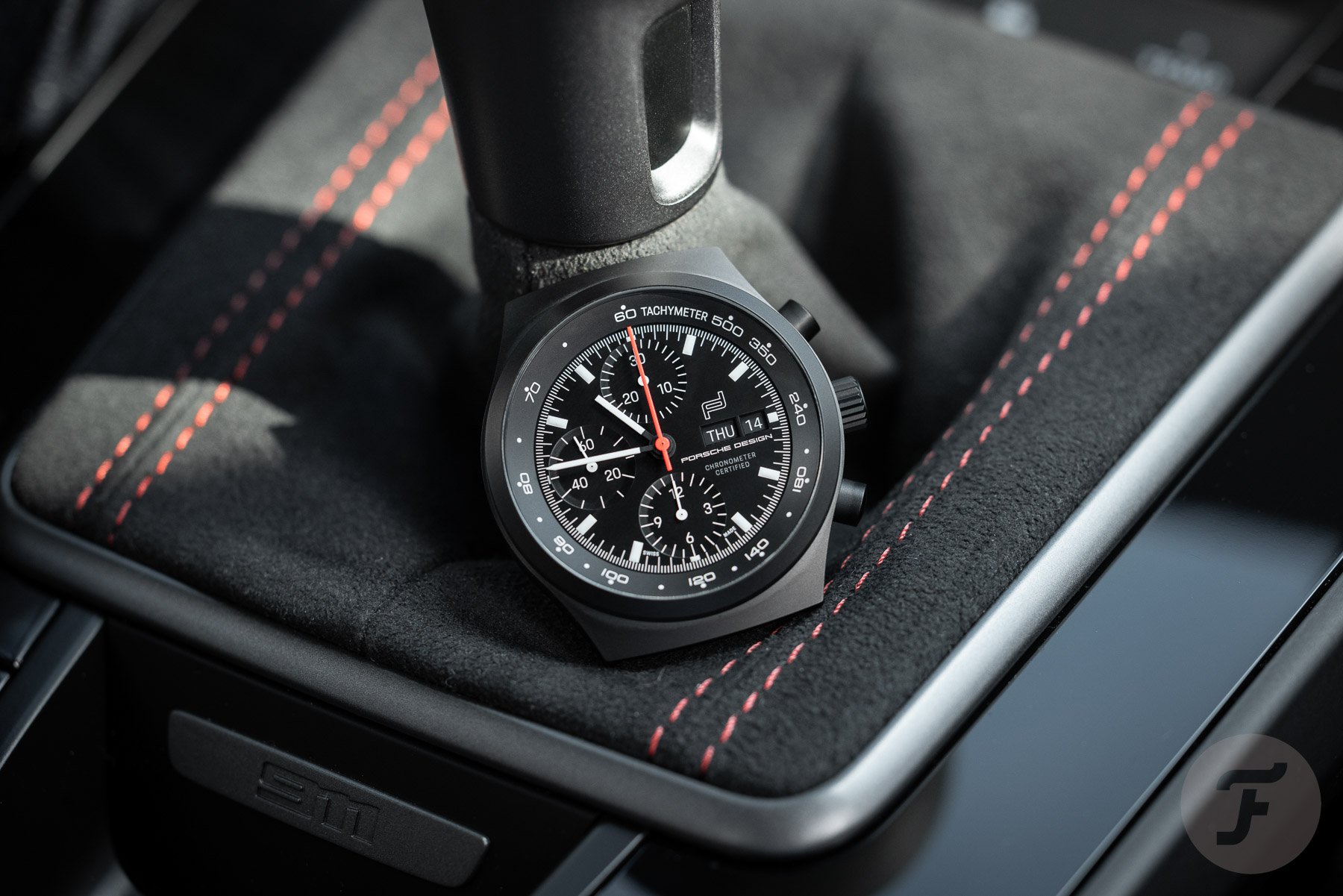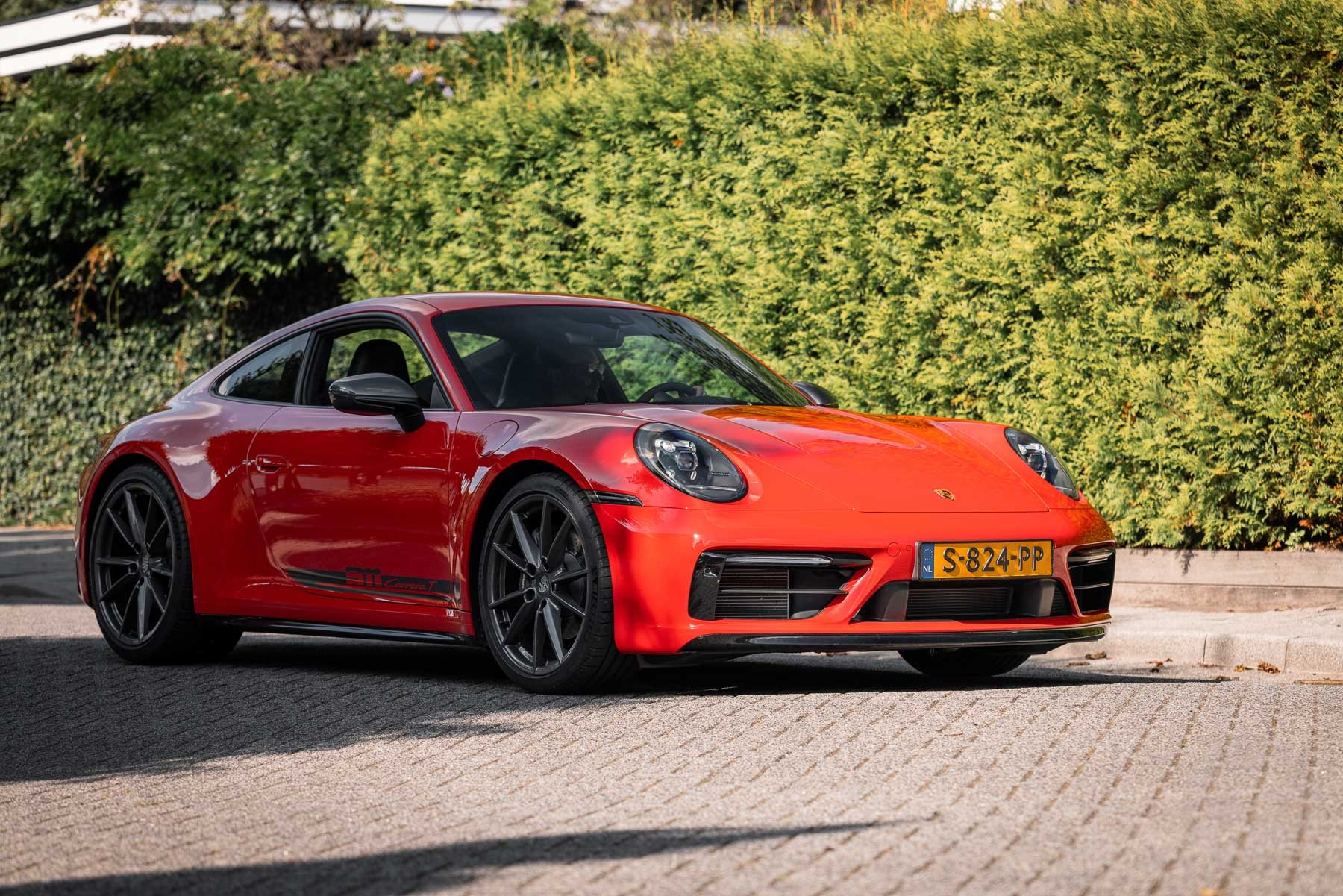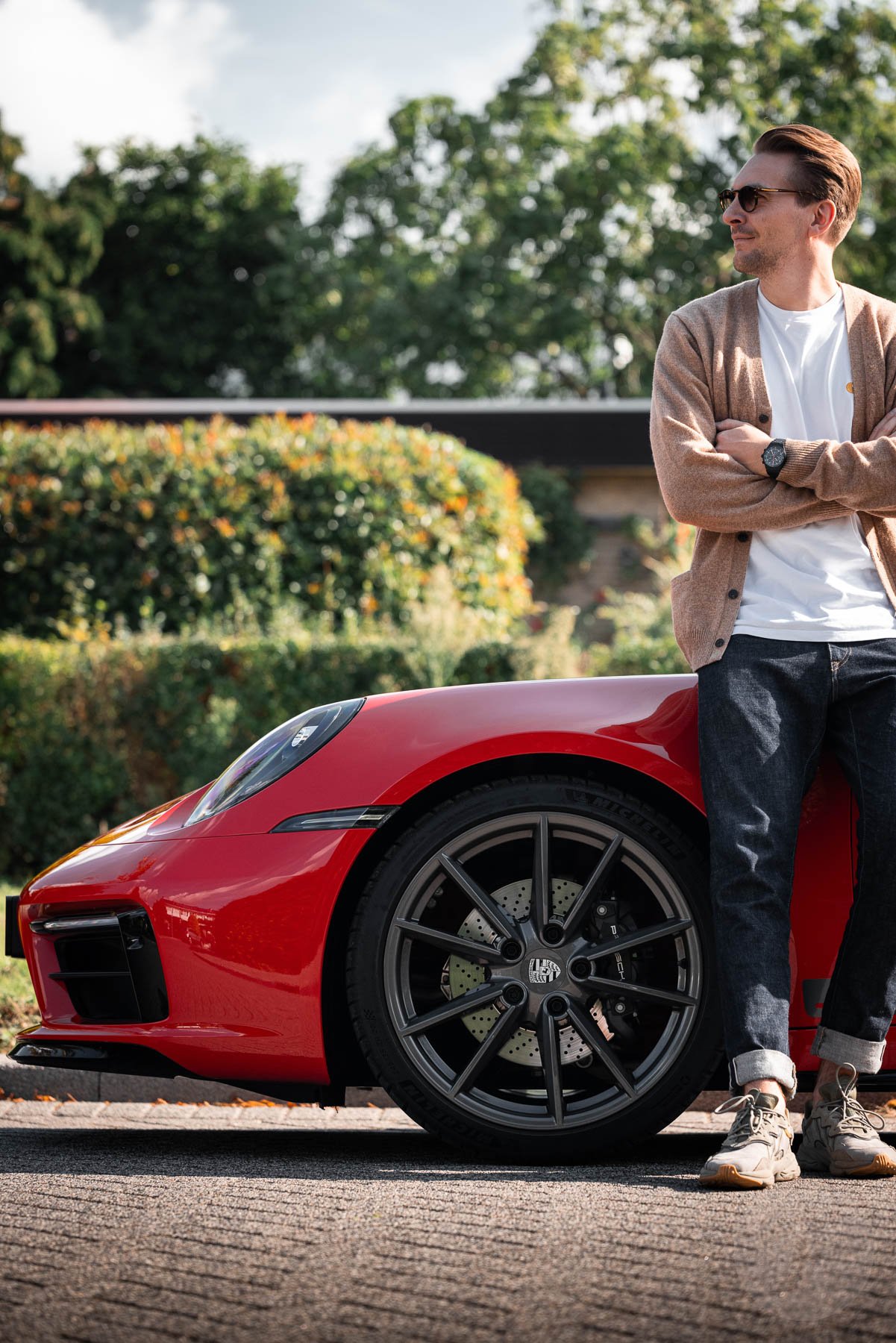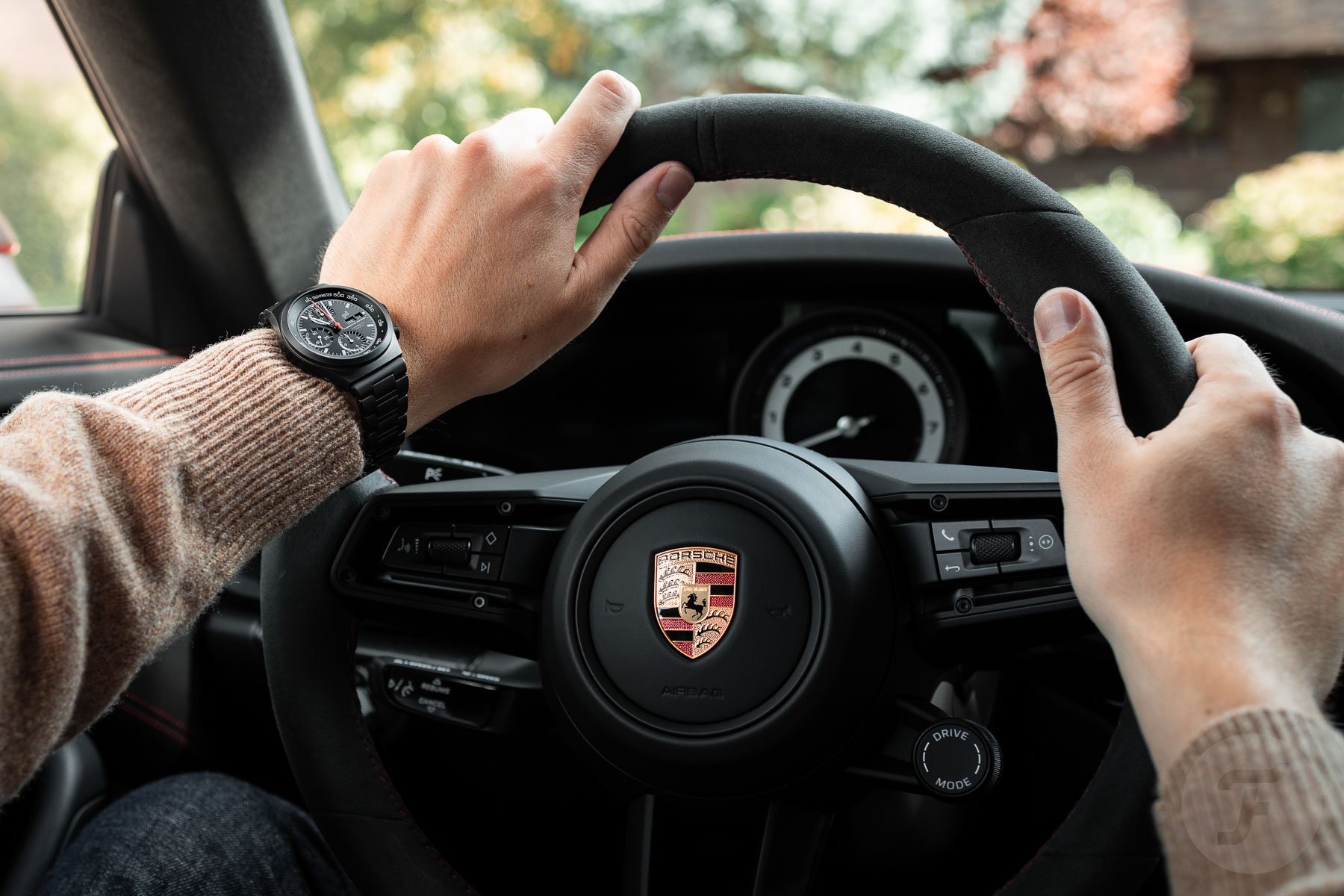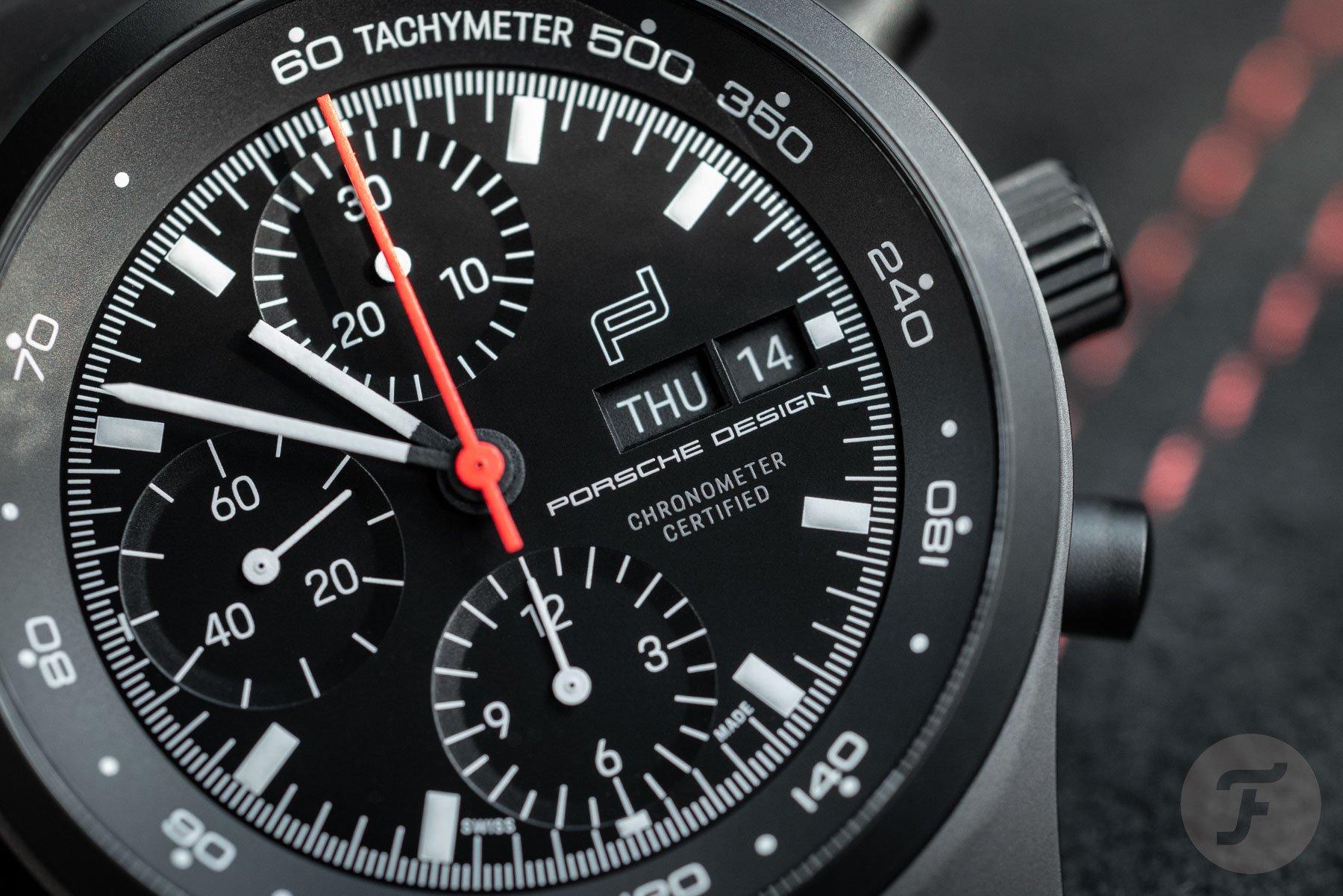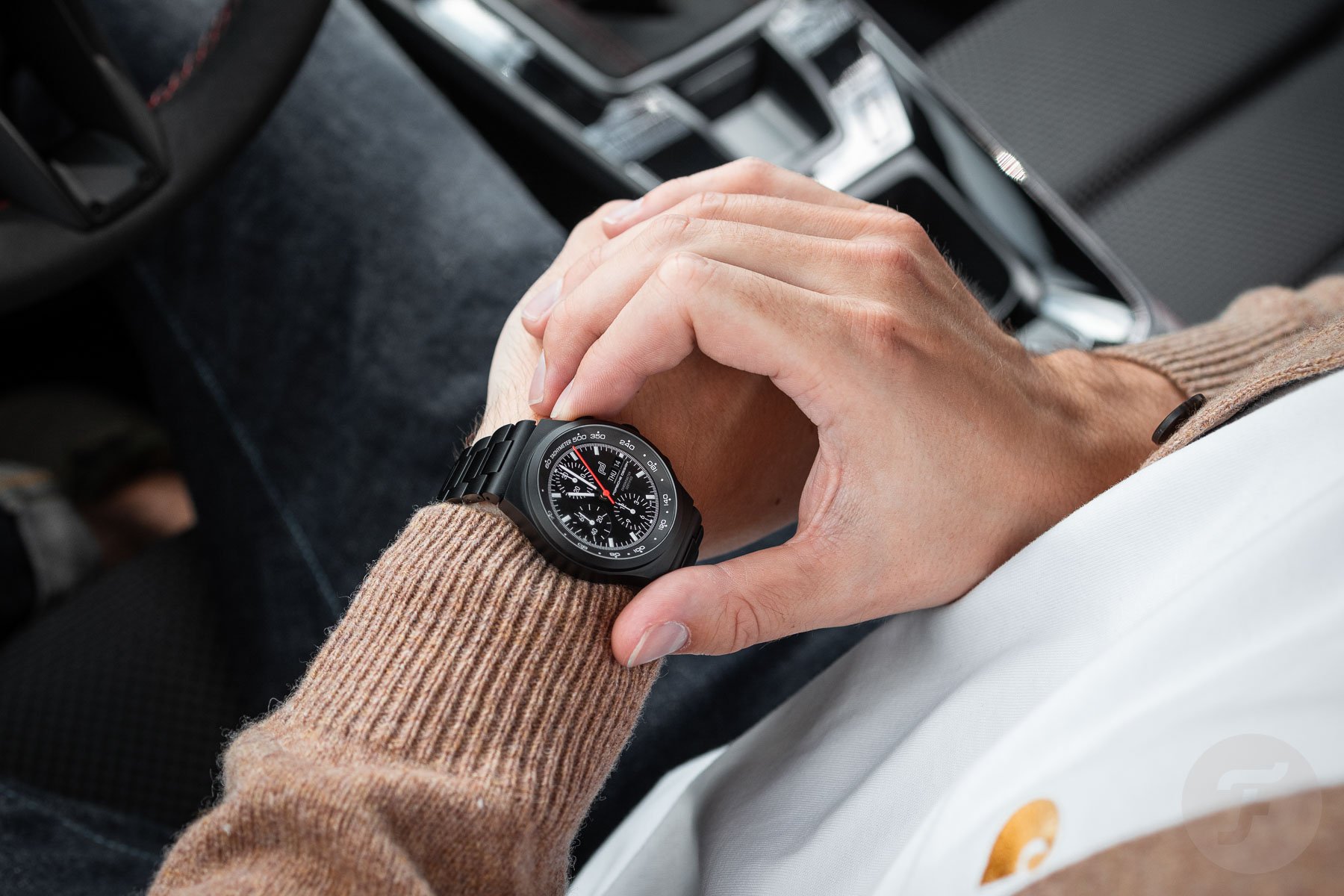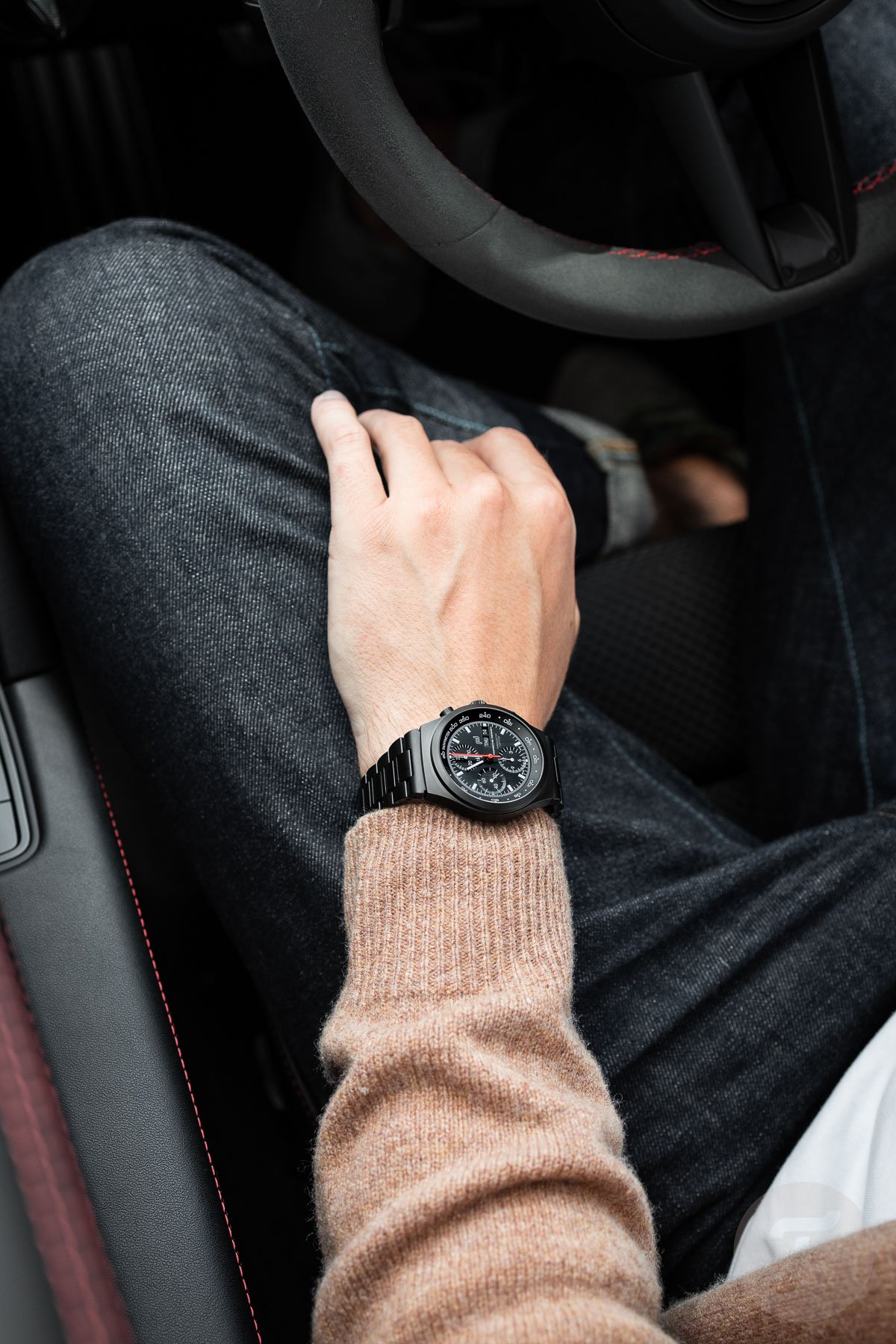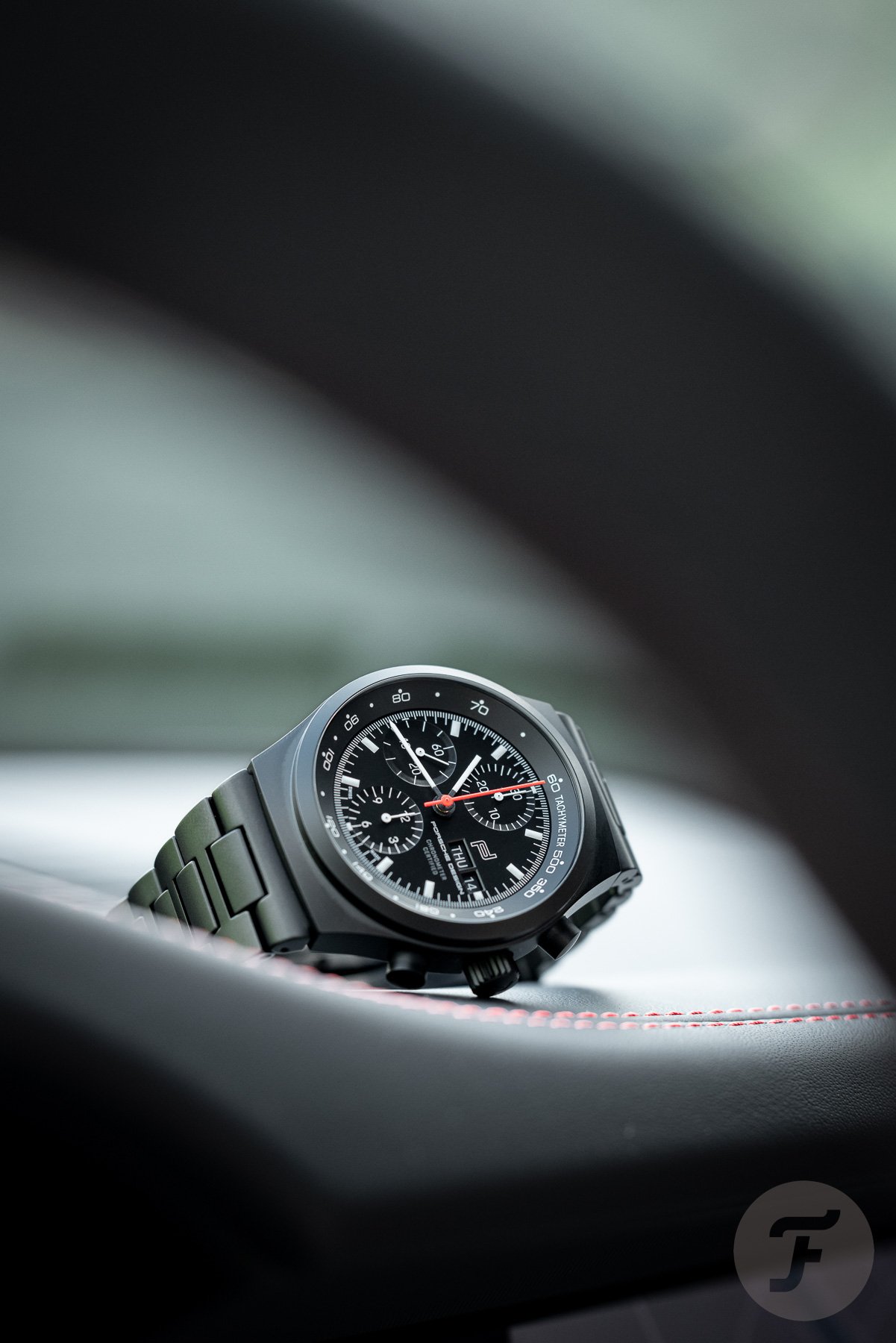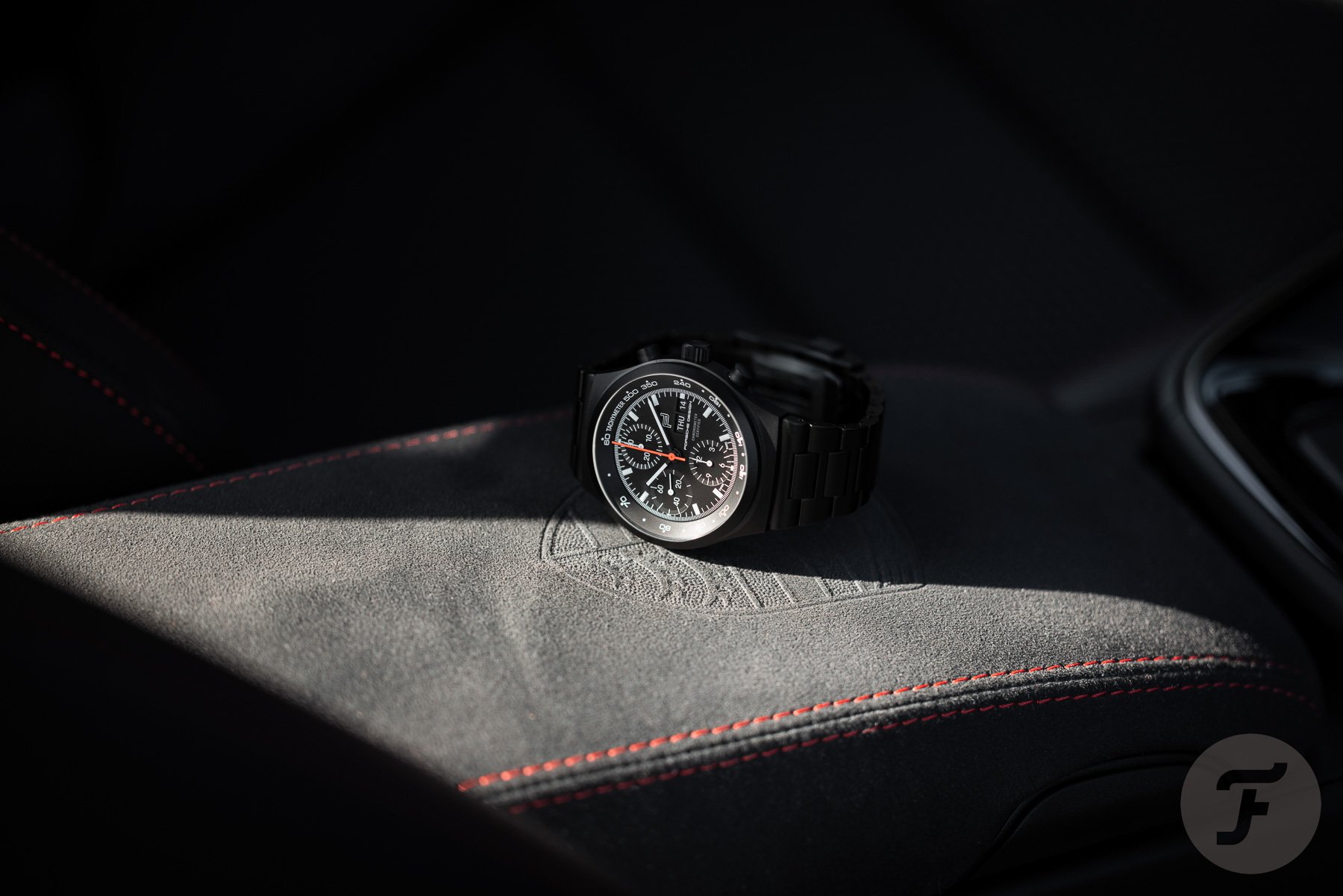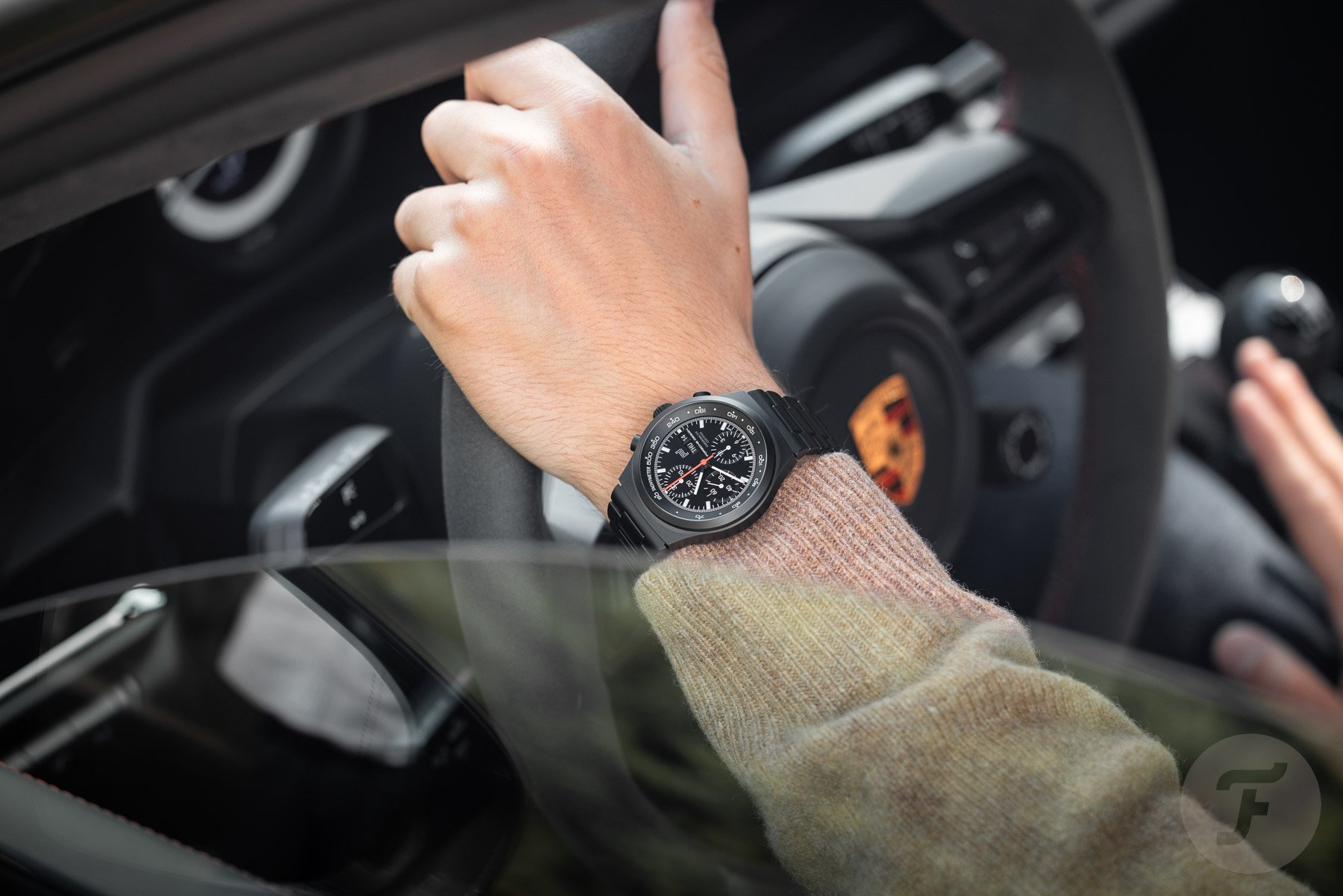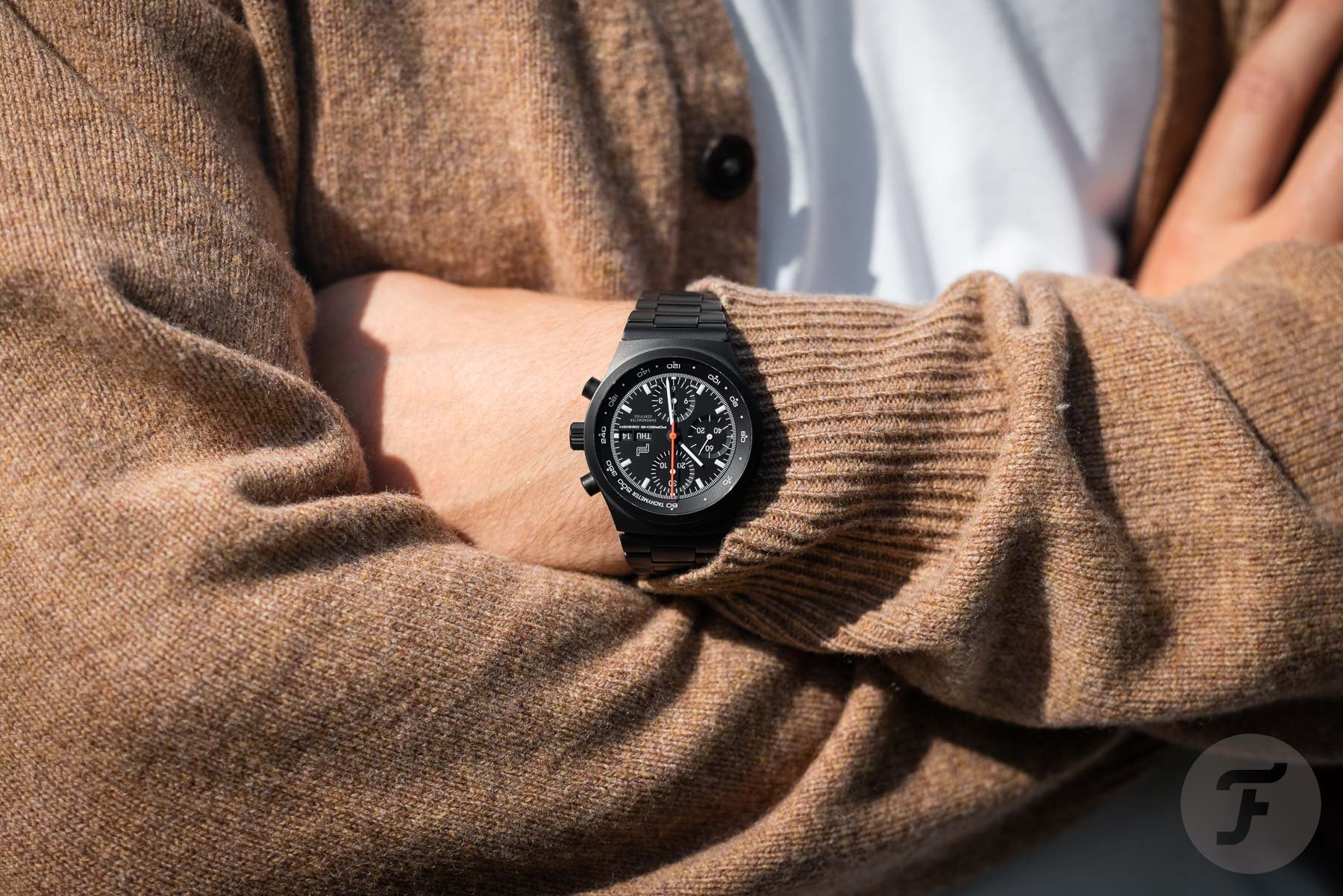Hands-On: Pairing A Porsche Design Chronograph 1 And A 911 Carrera T
The 1972 Porsche Design Chronograph 1 is revered as one of the great racing chronographs. It may not enjoy the mainstream adulation of a Speedmaster or a Daytona, but it is certainly a niche icon. Any designer would be lucky to have a watch like this in his/her portfolio. But F.A. Porsche was no ordinary designer. Before he drew the Chronograph 1, he already had a certain little sports car to his name. One, in fact, that bears his family name — the Porsche 911.
I have enjoyed the combination of a limited-edition Porsche Design Chronograph 1 and a 911 before on the Grossglockner in Austria. This time, however, I would spend more time scrutinizing the regular-production model of the watch. So I got in a Carrera T kindly lent to us by the Dutch Porsche distributor, and I started timing laps. Let’s see how we fared.
Porsche Design Chronograph 1 history
The Chronograph 1 was one of the first designs by Ferdinand Alexander Porsche upon leaving the Porsche car company. He founded Porsche Design in 1972 and drew the Chronograph 1 that same year. The design was very clearly influenced by the sports car he designed earlier in his life. The dial looks a lot like early 911 gauges.
Porsche Design teamed up with Orfina to develop its debut watch. The case came from Orfina’s catalog, but F.A. Porsche made a historic change to it. To reduce glare, he blacked out the entire case and bracelet. This is a common sight today, but Porsche Design was the first to do it. With PVD treatment in its infancy, however, original Chronograph 1 watches often lost their black coating over time. White dial printing and a bright red seconds hand provided the greatest contrast possible. The watch was powered by the then-brand-new Valjoux 7750 (later ETA 7750) automatic chronograph movement. In 1975, PD switched to the Lemania 5100 caliber.
The watch gained fame through its adoption by several airforces. Being heavily featured on Tom Cruise’s wrist in Top Gun surely helped too. In fact, the exact watch from the first film makes a reappearance in the 2022 sequel.
The current Porsche Design Chronograph 1
Fast-forward to today. The current rendition of the Chronograph 1 looks familiar — eerily so, perhaps. Porsche Design recognized the timeless quality of the design and decided not to mess with it. And that is something I can only applaud, not out of some sort of sentimentality but because I don’t see it getting any better. It needs no changes to feel contemporary. The design simply hasn’t lost any of its relevance over the decades.
Still, some things have been updated. For starters, the case and bracelet are now made of titanium. The carbide coating is much more durable, and some new features have been added. You now get a push-button quick-release bracelet and a toolless micro-adjust clasp, for instance. You also get a very respectable 100m water resistance rating.
Inside ticks the Porsche Design Werk 01.140. This caliber is a joint effort between Porsche Design and Concepto. The base architecture is derived from the Valjoux 7750, but the hairspring, escapement, winding mechanism, and adjustment mechanism are all new. So is the heavy decoration, which includes the skeletonization of certain plates and black-chroming. The caliber is regulated and certified by the COSC as a chronometer.
The Porsche 911 Carrera T
Let’s take a little break from the watch and look at the car. We took the Chronograph 1 out in a Guards Red 911 Carrera T from the current 992 generation. The T is a sort of driver-focused version of the 911. Although it features the same engine and power as the base 911, it is a little lighter. The rear seats have been removed, and the windows are thinner. This version also comes with a seven-speed manual transmission as standard. The Guards Red matched the Chronograph 1’s central chronograph hand nicely and proved to be quite the head-turner on the Dutch roads.
With 385 horses over the rear wheels, this felt a little more manageable than the GTS I drove in Austria. Acceleration is still very fast but a little less violent. Still, there was plenty of power and pace to be found at all times. Whether slinging myself out of a sharp corner or overtaking on the highway, the car never ran out of oomph. There really isn’t any sensible reason to want anything more. Except, that is, for the exhilarating shot of pure terror when you catapult yourself forward in the 480 HP GTS. We just don’t grow up, do we?
I am a total sucker for a 911, I will admit it. I love the styling, including that of the current 992 generation. The firmly planted road feel and surgically precise steering are sensational. No matter how hard I push it into a corner, it seems to softly, politely reply, “We can go faster if you want.” The only thing I’d change on this one is the transmission. I will catch flack for this, but I am no manual purist by any stretch, and seven gears are at least one too many. I would spec the PDK. Having driven both the T and the GTS, I reckon I would split the difference and opt for a Carrera S.
Pairing the Chronograph 1 and the 911 Carrera T
Perhaps the following is just imaginary because I am aware of the history, but the watch and the car truly go together like ham and cheese. Granted, I had specifically requested a red or black car to match the watch in the photography. Some aesthetic overlap was to be expected then.
But it goes deeper than that. There is a common ground in the design philosophy of the two. That makes sense as they are both descendants of original designs by one man. It is, however, hard to put a finger on what connects them precisely. It may be a certain functional subtlety. For luxury items, there is very little embellishment or frivolousness in either the 911 or the Chronograph 1. They share a rationality and a degree of Spartan aesthetic focus.
The Chronograph 1 would look out of place in a Ferrari or Lamborghini. There is too little drama. I would completely understand if people felt that this car and watch combo lacked a certain joie de vivre. To me, though, this is precisely why both are so attractive. The understated, to-the-point vibe they both exude lures me in. I would even have a dark gray 911 just to lean into that even more. Call me boring…I know what I am.
Wearing the Porsche Design Chronograph 1
Having spent some time with the Porsche Design Chronograph 1 on the wrist, I found it grew on me. I find it beautiful as an object, and I love all its dimensions except for its height. It is a little over 14mm tall, but it is the way it distributes that height that leaves me wanting. The distance from the bottom of the case back to the bottom of the mid-case band is a whopping 5mm. This means it looks like it is floating well above the wrist. It always wears as if two layers of nylon strap are packed underneath. This is one of several reasons why I prefer chronographs to have hand-wound calibers.
Otherwise, it has the perfect sports-watch presence. The 40.8mm diameter paired with the unique hooded-lug case is spot on. The intricate dial is relatively small, sitting within a broad tachymeter rehaut. Still, it is so well sorted in terms of visual hierarchy that it is extremely legible.
The bracelet is similarly well made. It is held together with one-sided screws, which is my favorite method by a long shot. The micro-adjust is handy, although not the smoothest-feeling option on the market. I do love how it sits within a very small single-sided folding clasp. The quick-release mechanism, unfortunately, isn’t as brilliant. It is a very handy and user-friendly system on its own. But to facilitate it, the end links have to flare out. Paired with the tall case back, this means there is always quite a substantial gap between the watch and the wrist. The older versions without quick-release could drape down straight from under the hooded lug, which provided a nicer fit. Sometimes, as evident here, more features don’t make for a better watch.
Pricing and availability of the Porsche Design Chronograph 1
The version of the Porsche Design Chronograph 1 you see here is individually numbered but not limited. However, Porsche Design produces a maximum of 1,000 pieces per year. The watch can be purchased on the Porsche Design website or in PD boutiques. The Chronograph 1 is priced at €8,950.
Closing thoughts
I think it comes as no surprise that I had a good time driving the Carrera T and wearing the Chronograph 1. I was, however, surprised at how well the two go together. The shared DNA is noticeable in many ways. By itself, the watch made quite an impression as well. I find it extremely attractive in all its Spartan glory. Interestingly, it was one of the rare occasions in which nearly the entire Fratello office agreed.
The car and the watch share one more trait. They are both — how shall I put this? — not exactly catering to value seekers. If it is horsepower-per-buck you are after, you will probably end up with a Corvette or, if you have your heart set on something German, even a BMW M3. Similarly, you can find well-specced, well-made racing chronographs for much less. Porsche Design pricing it significantly higher than a Moonwatch is a bit of a statement, I feel.
But, then again, it is as with the cars. If you want the Porsche, you will go for the Porsche. This applies to me too. I will likely never spend big on a car. But if I do, it will be on a 911. You can show me better-value options, but I will not care. The Porsche Design Chronograph 1 is much the same. If you are going to compare it in an Excel spreadsheet of racing chronographs, you’re not the target audience. So, am I? Well, I might just add one to my order when I spec my dream Carrera S! Until then…at least I still have the pictures.
What do you think of the Porsche Design Chronograph 1 and the 911 Carrera T? Let us know in the comments below!

